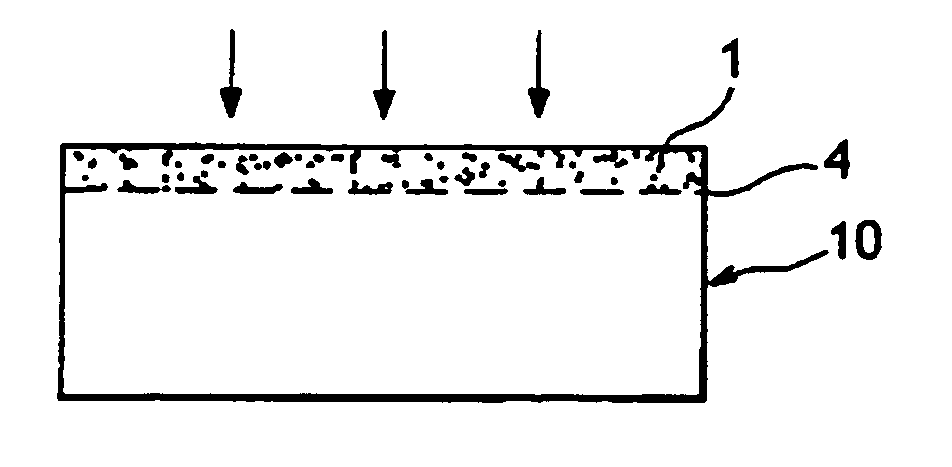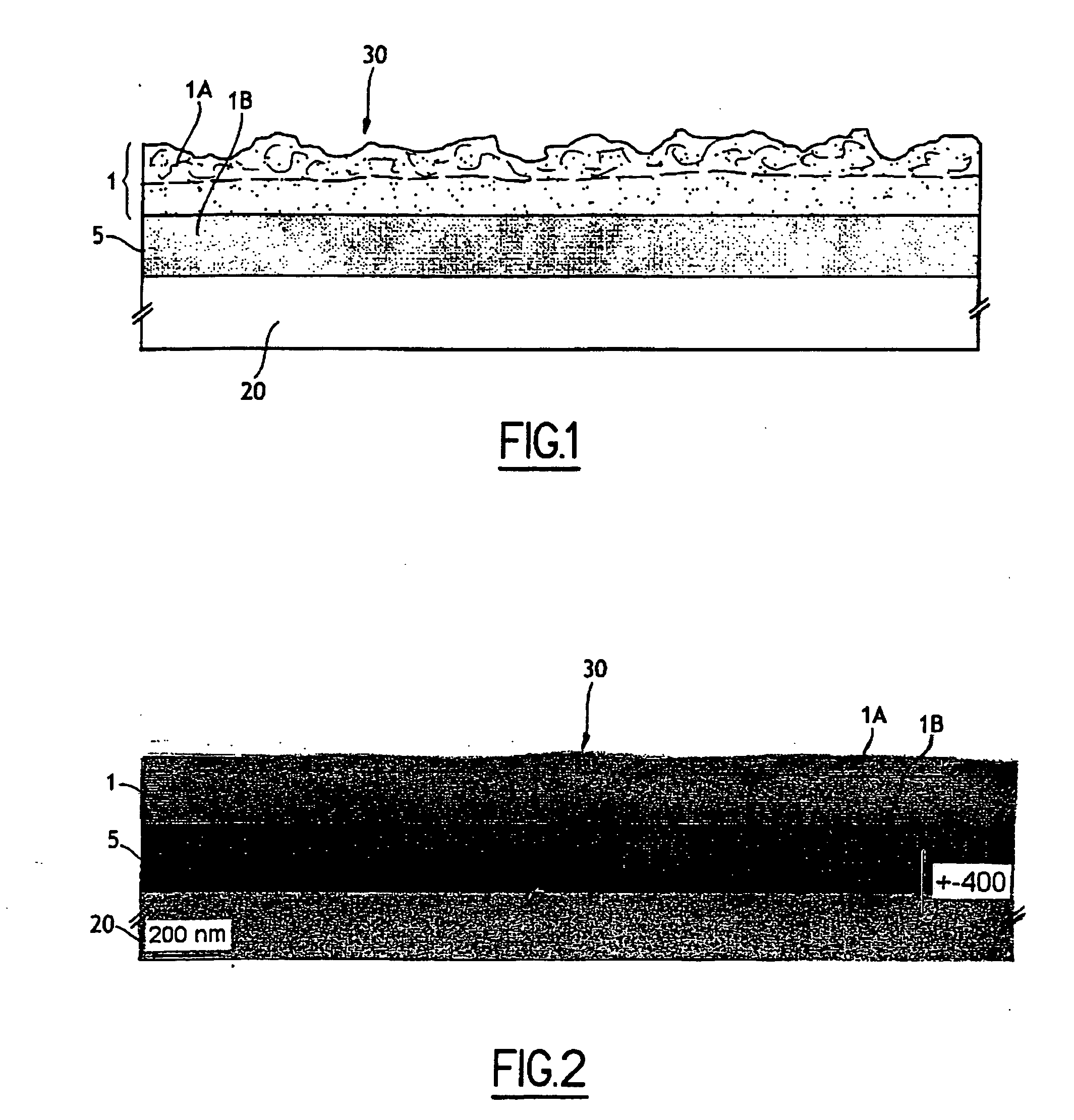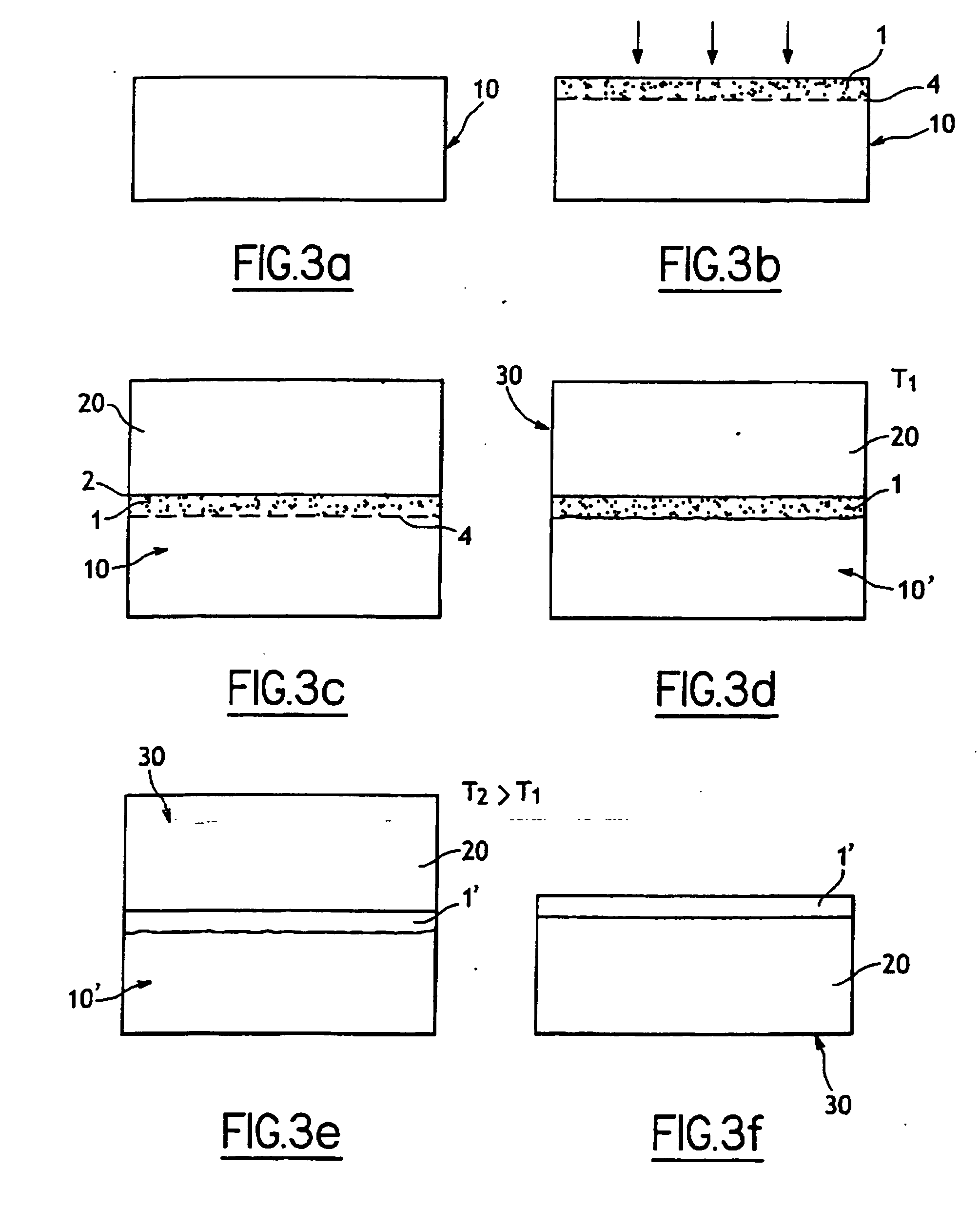Methods for thermally treating a semiconductor layer
a technology of thermal treatment and semiconductor layer, which is applied in the direction of duplicating/marking methods, sustainable manufacturing/processing, climate sustainability, etc., can solve the problems of high cost and complexity of the transfer layer treatment step, loss of time, and inability to use suitable equipment, so as to improve the crystalline quality and surface roughness of the transfer layer, improve the crystalline quality and the effect of surface roughness
- Summary
- Abstract
- Description
- Claims
- Application Information
AI Technical Summary
Benefits of technology
Problems solved by technology
Method used
Image
Examples
Embodiment Construction
[0021] Presented below are examples of methods according to the invention, as well as applications, based on transfer layers obtained by using the SMART-CUT® process with Type IV materials or alloys, and in particular with Si1-xGex where x≠0.
[0022] Referring to FIGS. 3a to 3f, a first method is depicted for transferring a layer of Si1-xGex where x≠0 from a donor wafer to a host wafer. In FIG. 3a, a donor wafer 10 includes a Si1-xGex layer that is to be transferred. Classically, a donor wafer 10 including Si1-xGex comprises a solid Si substrate upon which a buffer structure of SiGe (not shown) has been formed that is made of different layers. The SiGe buffer structure is fabricated to have a gradually increasing amount of Ge through its thickness, starting from 0% at the solid Si substrate level to about 100% at the level of the interface with the upper layer made of Si1-xGex. Of course, the donor wafer 10 may have any other configuration for which a layer of Si1-xGex that is either...
PUM
| Property | Measurement | Unit |
|---|---|---|
| temperature | aaaaa | aaaaa |
| temperature | aaaaa | aaaaa |
| recovery temperature | aaaaa | aaaaa |
Abstract
Description
Claims
Application Information
 Login to View More
Login to View More - R&D
- Intellectual Property
- Life Sciences
- Materials
- Tech Scout
- Unparalleled Data Quality
- Higher Quality Content
- 60% Fewer Hallucinations
Browse by: Latest US Patents, China's latest patents, Technical Efficacy Thesaurus, Application Domain, Technology Topic, Popular Technical Reports.
© 2025 PatSnap. All rights reserved.Legal|Privacy policy|Modern Slavery Act Transparency Statement|Sitemap|About US| Contact US: help@patsnap.com



